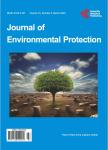Disposal and Treatment Methods for Pesticide Containing Wastewaters: Critical Review and Comparative Analysis
Disposal and Treatment Methods for Pesticide Containing Wastewaters: Critical Review and Comparative Analysis作者机构:Department of Process Engineering and Applied Sciences Faculty of Engineering Dalhousie University Halifax Canada Department of Process Engineering and Applied Sciences Faculty of Engineering Dalhousie University Halifax Canada.
出 版 物:《Journal of Environmental Protection》 (环境保护(英文))
年 卷 期:2012年第3卷第5期
页 面:431-453页
学科分类:1002[医学-临床医学] 100214[医学-肿瘤学] 10[医学]
主 题:Pesticides Health Soil Water Disposal Treatment Land Cultivation Disposal Pits Evaporation Ponds Landfills Incineration O3/UV Fenton Oxidation Hydrolysis Bioremediation Bioaugmentaion
摘 要:Pesticides provide the primary means for controlling organisms that compete with man for food and fibre or cause injury to man, livestock and crops. They played a vital role in the economic production of wide ranges of vegetable, fruit, cereal, forage, fibre and oil crops which now constitute a large part of successful agricultural industry in many countries. After application to the target areas, pesticide residues are removed from applicators by rinsing with water which results in the formation of a toxic wastewater that represents a disposal problem for many farmers. Pesticides can adversely affect people, pets, livestock and wildlife in addition to the pests they are intended to destroy. The phenomenon of biomagnification of some pesticides has resulted in reproductive failure of some fish species and egg shell thinning of birds such as peregrine falcons, sparrow hawk and eagle owls. Pesticide toxicity to humans include skin and eye irritation and skin cancer. Therefore, care must be exercised in the application, disposal and treatment of pesticides. Currently, disposal of pesticide wastewater is carried out by: 1) land cultivation, 2) dumping in soil pits, plastic pits and concrete pits or on land and in extreme cases in streams near the rinsing operation, 3) use of evaporation beds and 4) land filling. These methods of disposal are unsafe as the surface run off will reach streams, rivers and lakes and the infiltration of the wastewater into the local soil will eventually reach ground water. The treatment methods currently used for pesticide wastewater include: 1) incineration (incinerators and open burning), 2) chemical treatments (O3/UV, hydrolysis, Fenton oxidation and KPEG), 3) physical treatments (inorganic, organic absorbents and activated carbon) and 4) biological treatments (composting, bioaugmentation and phytoremediation). Therefore, the choice of safe, on farm disposal techniques for agricultural pesticides is very important. A comparative analysis w



